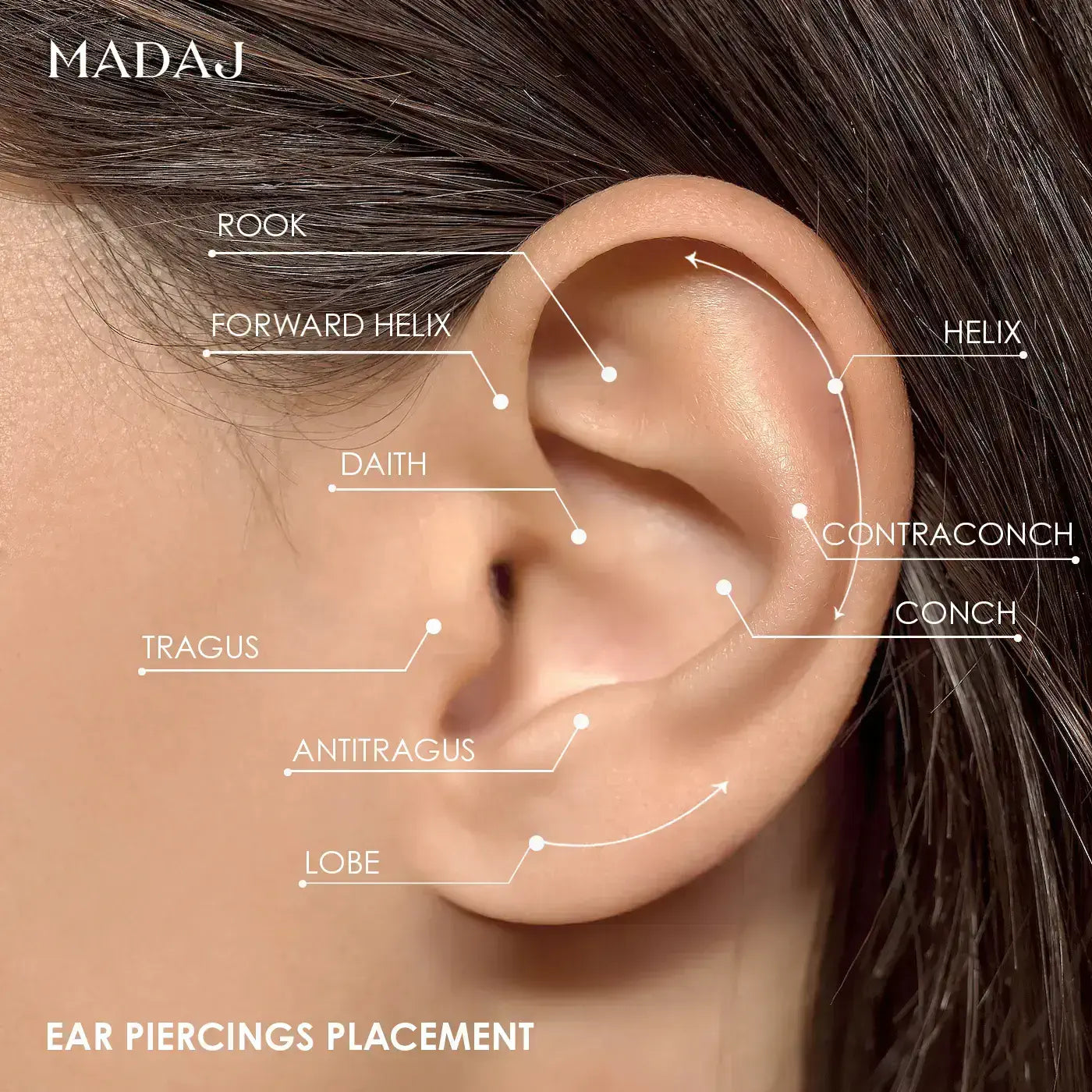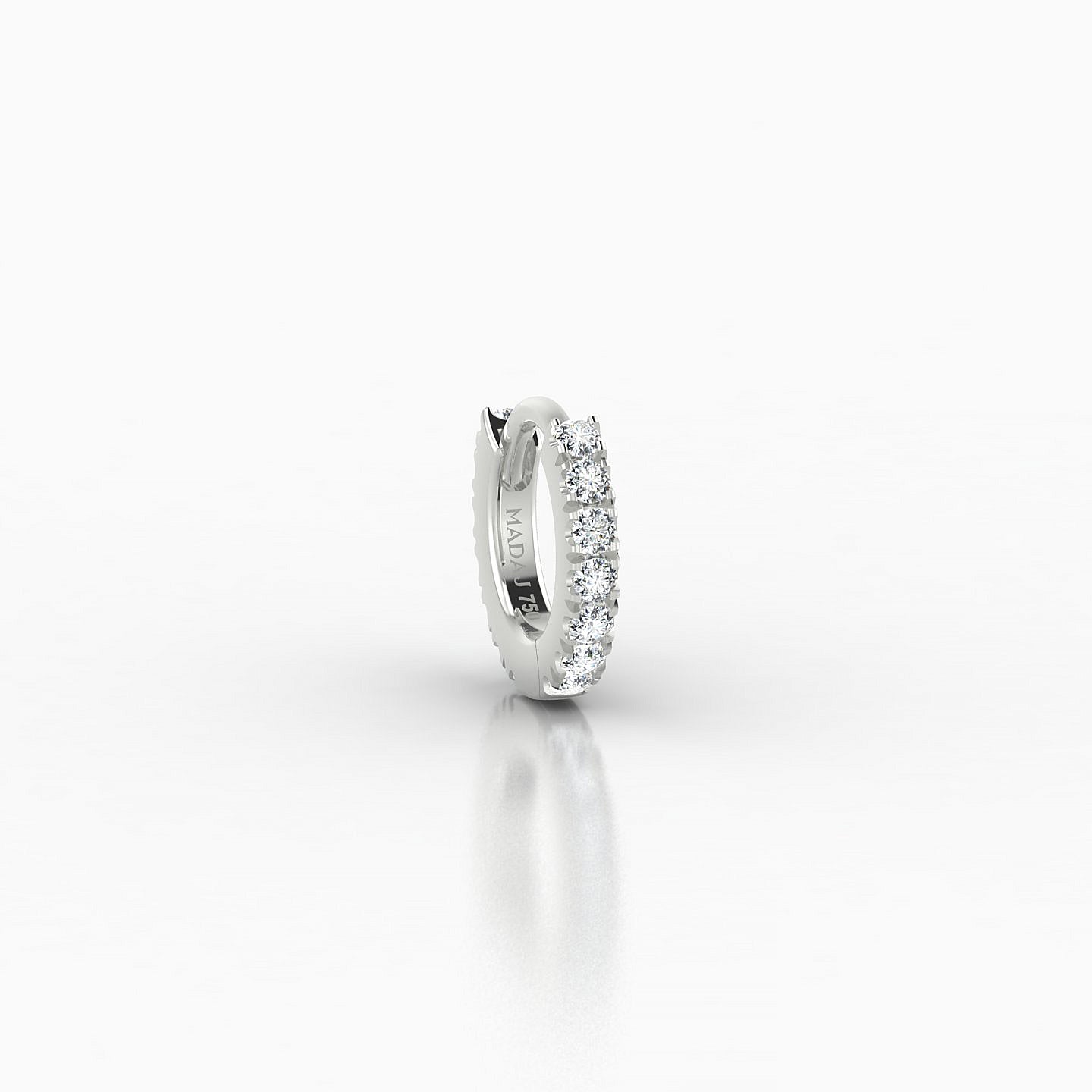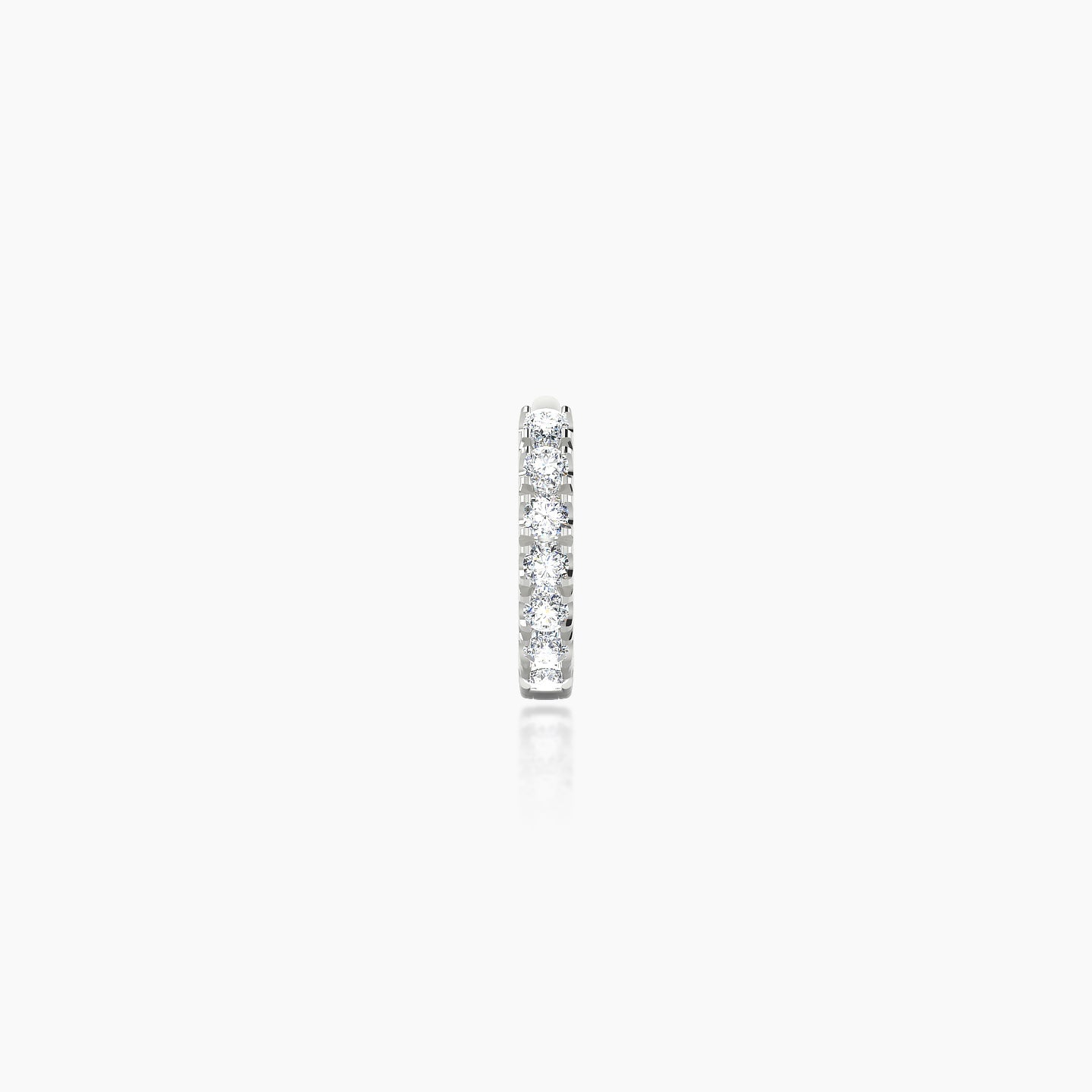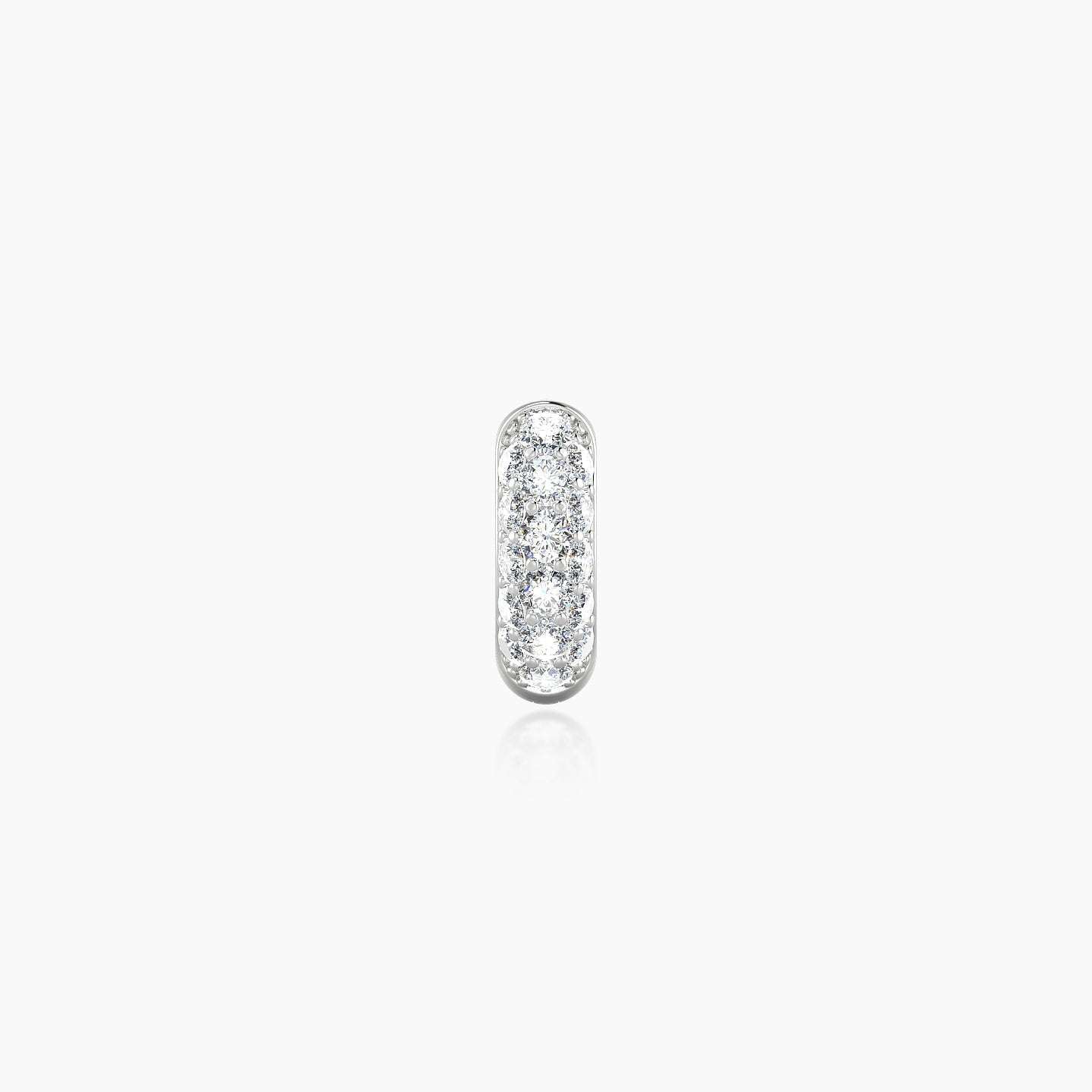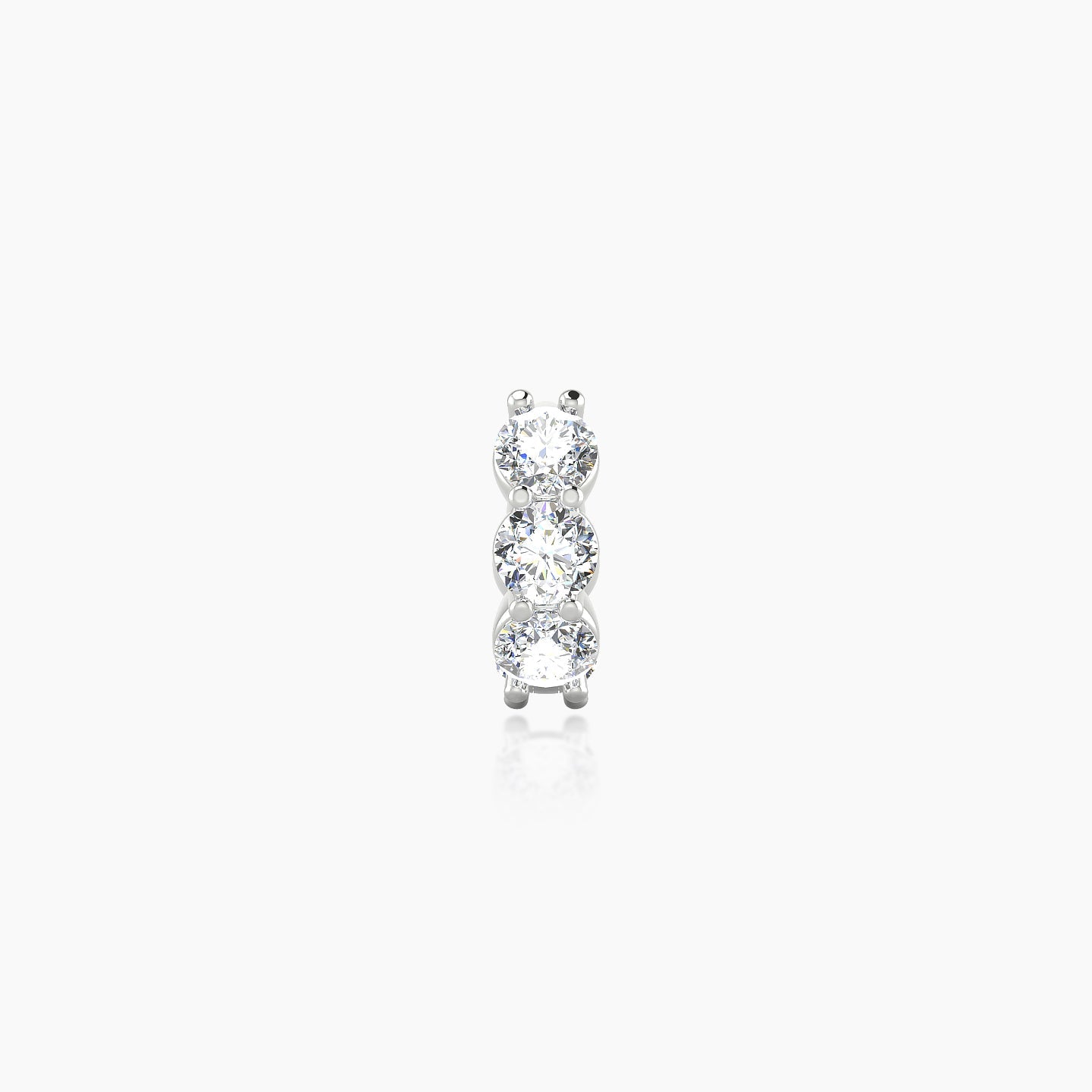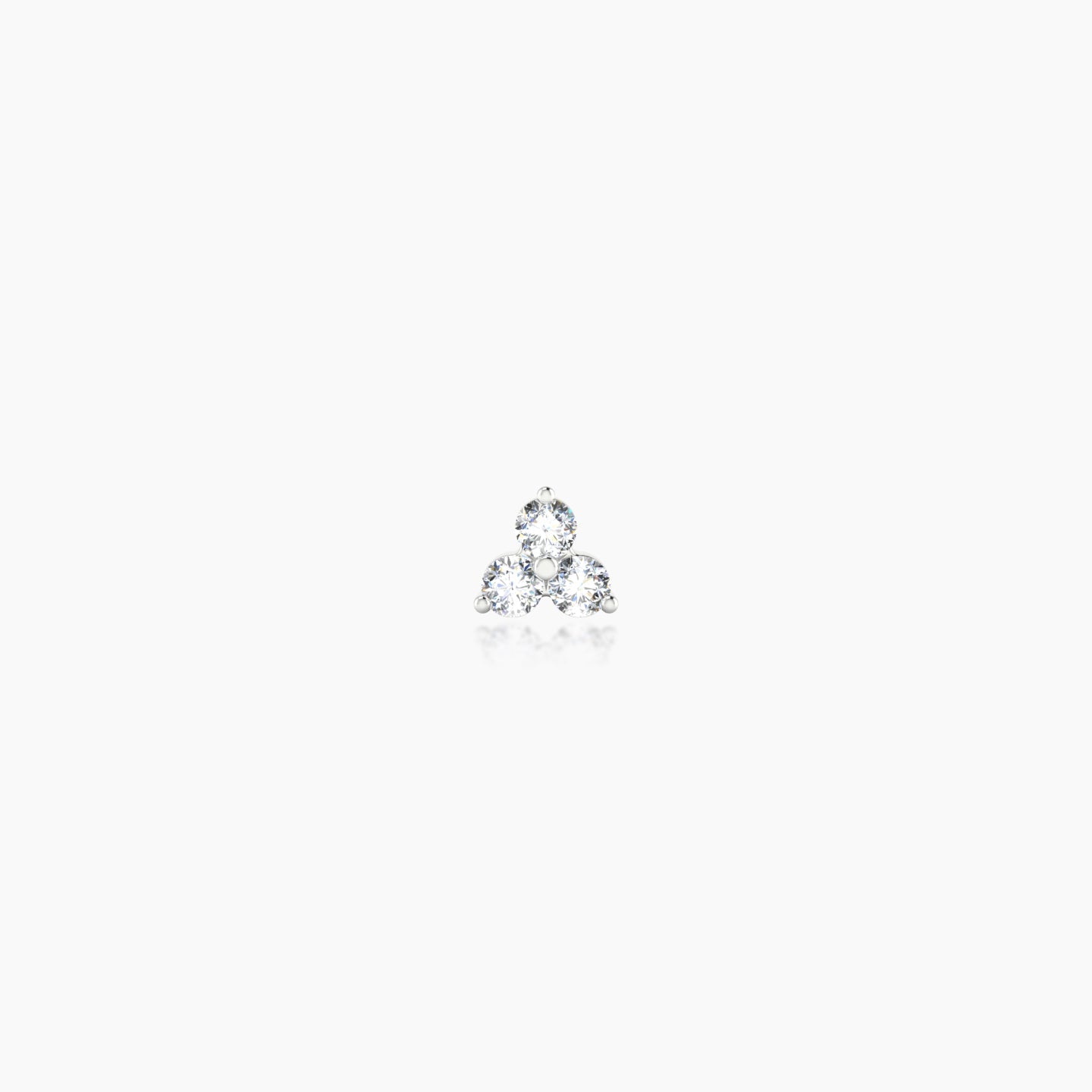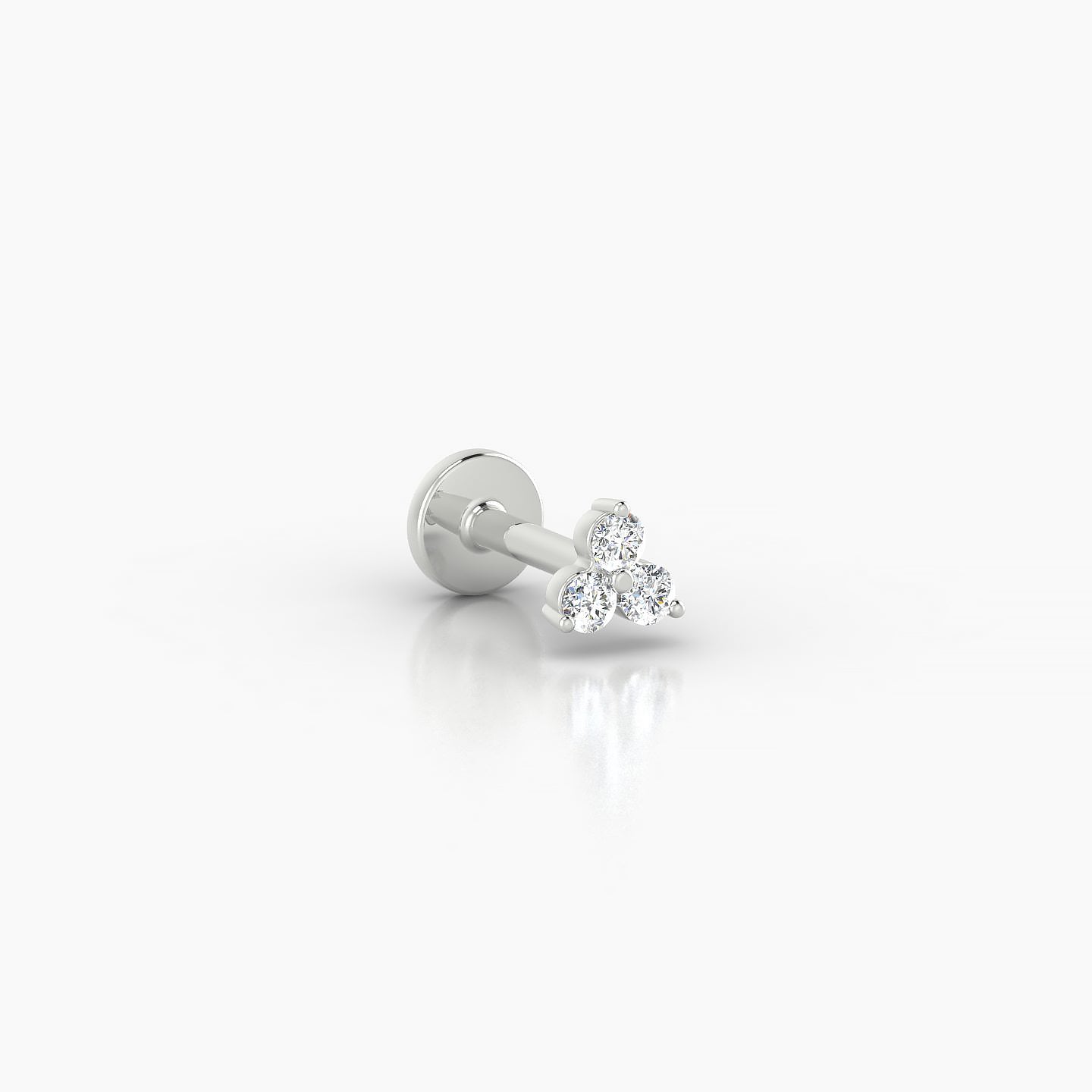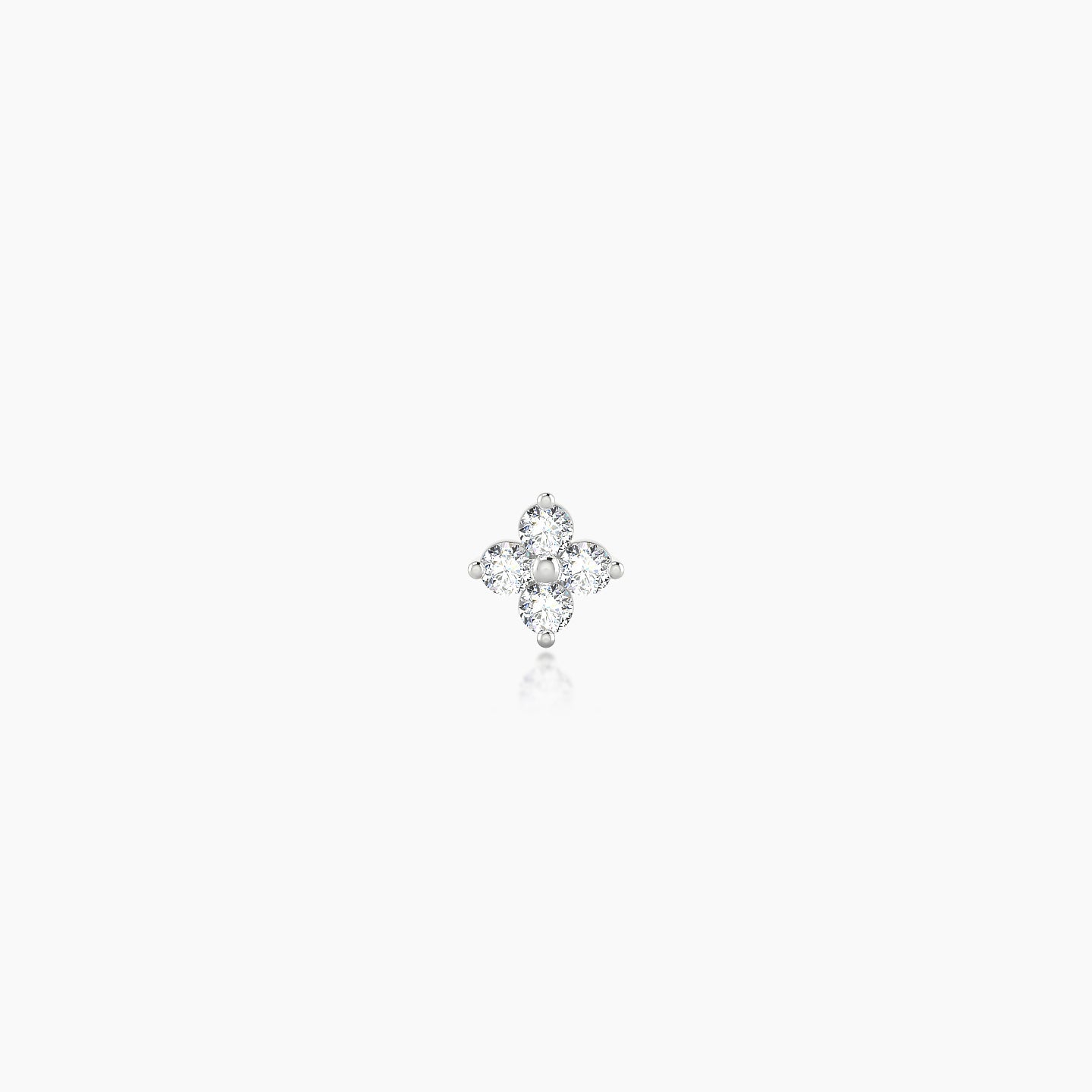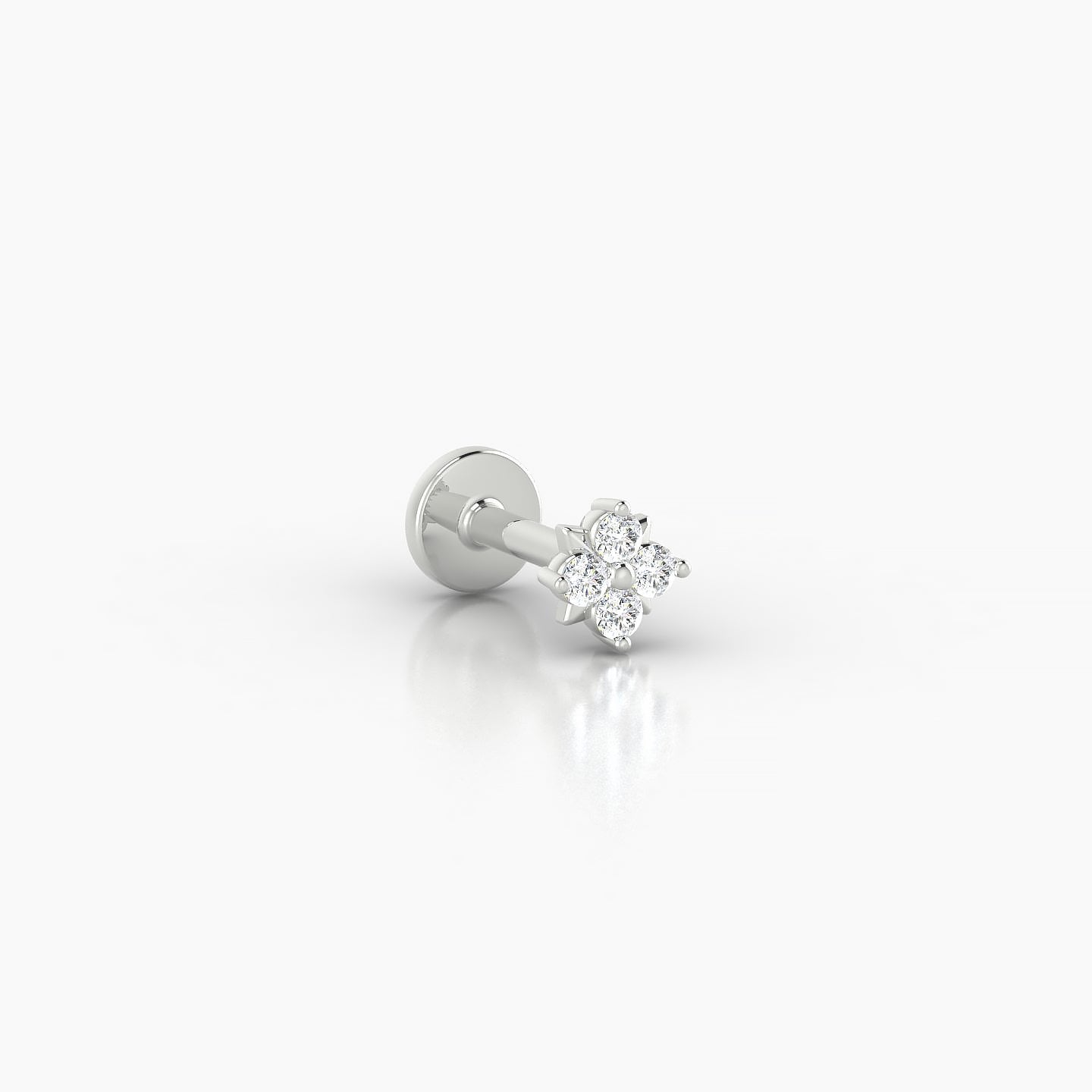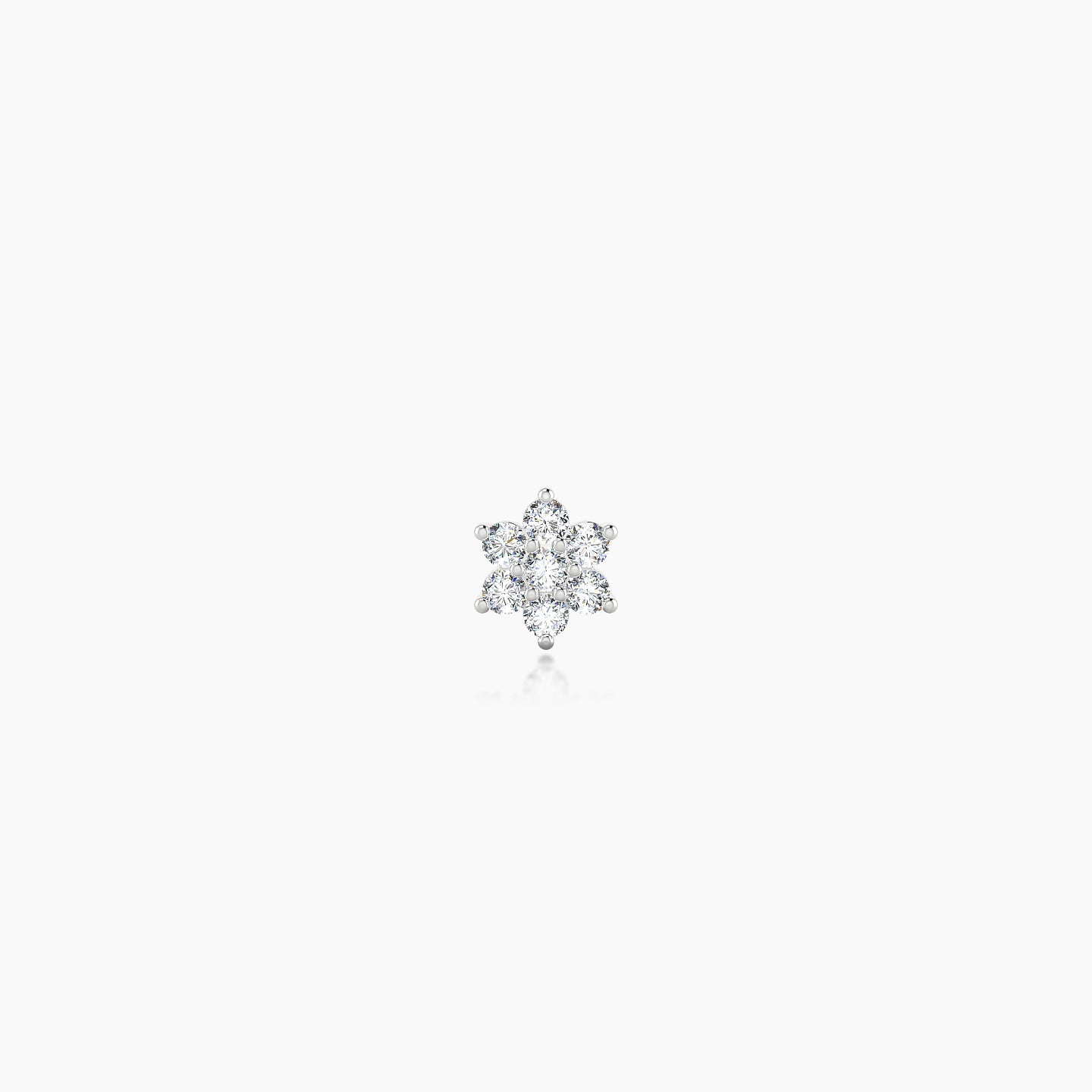Education
CONCH PIERCING FULL GUIDE
Conch piercings have gained popularity in recent years as a unique and stylish form of ear piercing. Located in the center of the ear's concha, the conch is the concave portion of cartilage that separates the inner and outer ear.
This encyclopedia entry explores the various aspects of conch piercings, including the procedure, healing process, jewelry options, and aftercare.

CONCH PIERCING PLACEMENT
The conch piercing is a unique and stylish type of ear piercing that is gaining popularity. It's named after the conch shell, reflecting its position in the ear's cartilage which resembles a shell's spiral. The conch piercing is located in the center part of the ear's cartilage, specifically in the concave area adjacent to the ear canal.

CONCH PIERCING PAIN LEVEL
Conch Piercing Pain Level: (7/10)
At MADAJ, we have noted the pain of the conch piercing to be significant. Indeed, the conch piercing is considered one of the most painful piercings due to the thickness of the cartilage. However, the peak of pain experienced lasts only a few seconds, during the piercing process.
How can I reduce the pain experienced during conch piercing?
There are solutions to minimize pain during conch piercing, such as the use of lidocaine-based numbing cream(EMLA or generics).
This cream is available in pharmacies by prescription.
It is recommended to apply it between 30 minutes to 1 hour before piercing.
To learn more about reducing the pain of an Conch piercing, discover our Guide on Ear Piercing Pain Levels.

CONCH PIERCING PROCEDURE
- The ear is cleaned thoroughly with an antiseptic solution to minimize infection risk.
- The piercer marks the spot where the piercing will be placed. For a conch piercing, this can be in the inner or outer part of the conch, depending on your preference and ear anatomy.
- A sterilized, hollow needle is used for the piercing. For a conch piercing, the needle is usually larger than those used for lobe piercings, due to the thickness of the cartilage. It is important to note that pain levels can vary significantly from one person to another.
- Once the needle is through, the chosen jewelry is immediately inserted.

CLEANING INSTRUCTIONS FOR CONCH PIERCING
- Clean your conch piercing twice a day – once in the morning and once before bed.
- Consistently clean your Conch piercing during its entire healing phase, which can last for several months and varies based on your personal healing timeline.
- Ensuring the pierced area remains dry is crucial to inhibit bacterial proliferation. After cleansing, carefully dab it with sterile non-woven gauze or use a hairdryer on a low, cool setting to achieve complete dryness.

HEALING TIME & PROCESS FOR CONCH PIERCING
The healing process : Expect some redness, swelling, and tenderness during the first few weeks. A small amount of discharge is normal.
You'll notice a gradual decrease in swelling and discomfort. It's crucial to maintain your cleaning routine even if the piercing seems to be healing well.
The absence of pain, reduced swelling, and no discharge indicates that your piercing is healing properly.
The healing time for a Conch Piercing can vary from individual to individual. Generally, it takes about 6 to 12 months for a conch piercing to heal completely.
Discover Our

